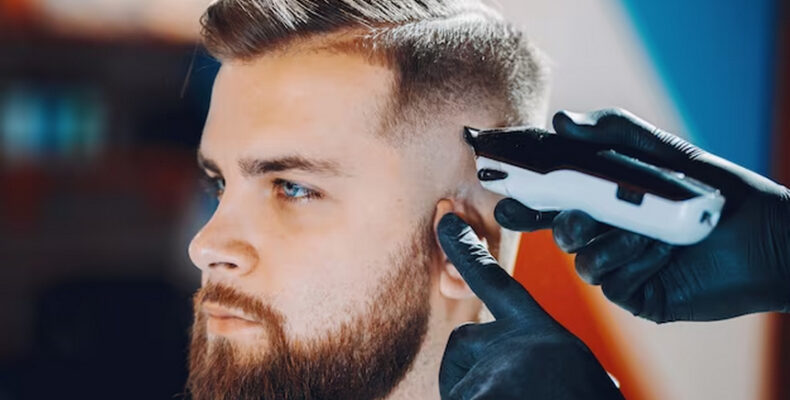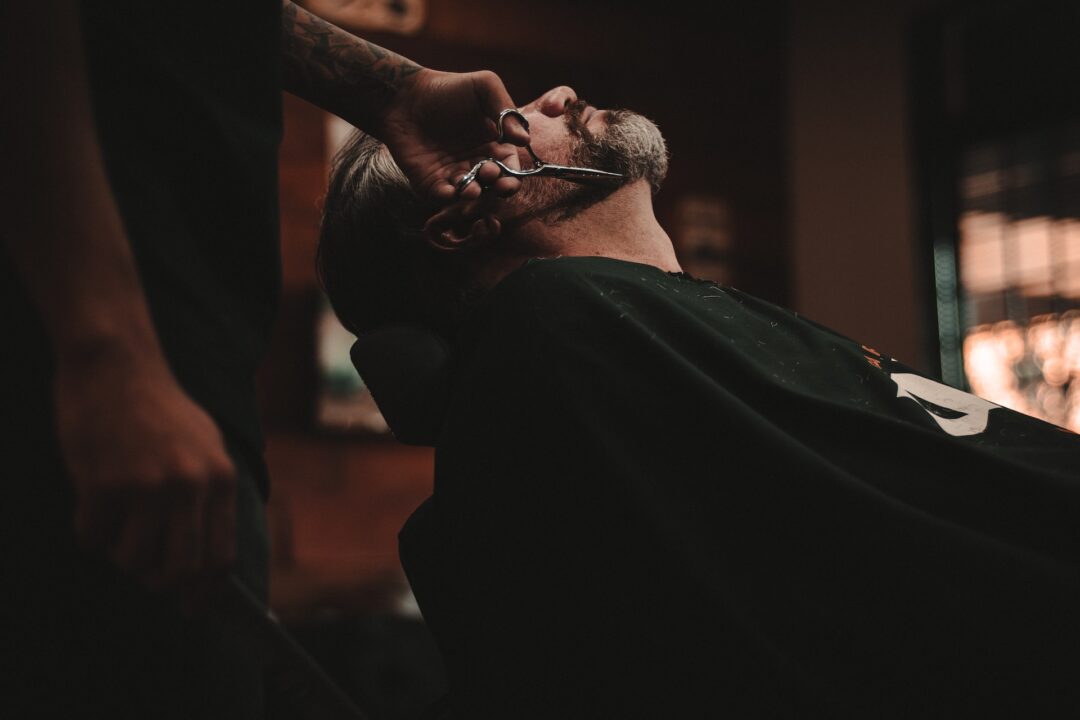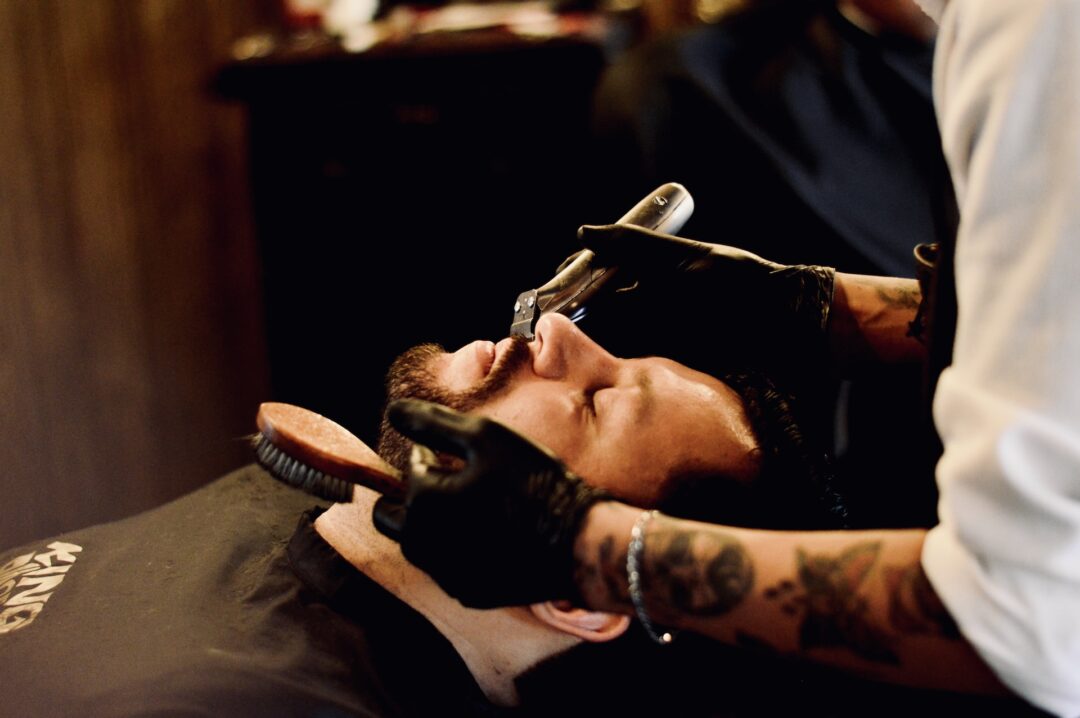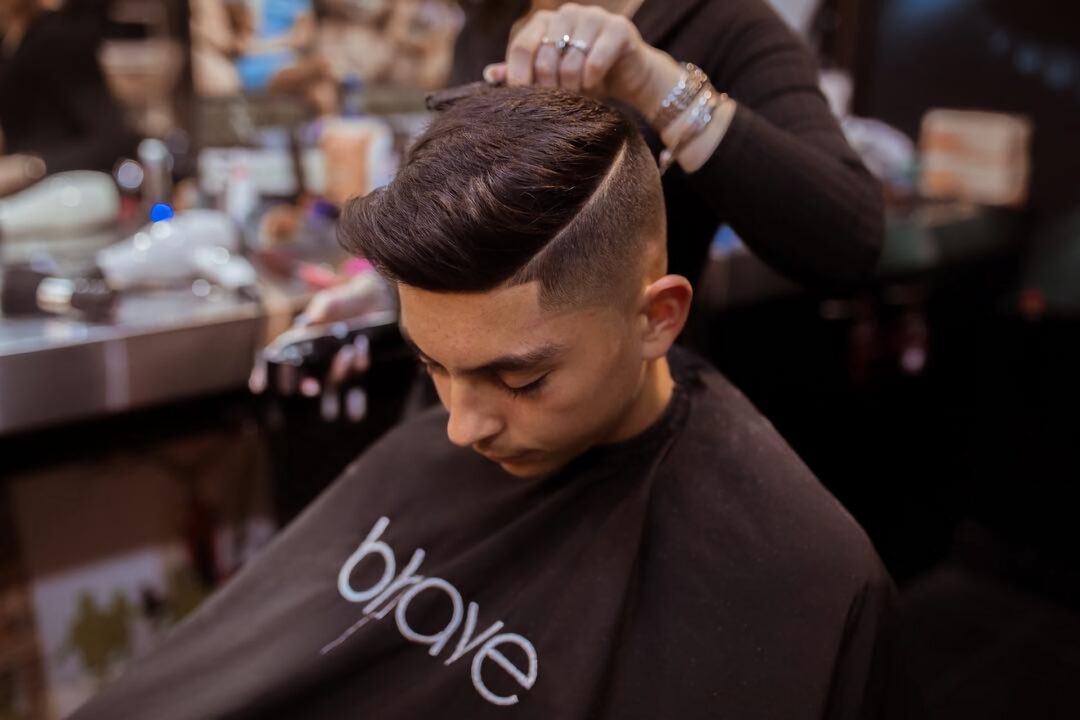The fade haircut, characterized by a seamless tapering of hair length, has long stood as a mark of impeccable grooming and sartorial taste. This fashionable style, loved by millions worldwide, has an intricate past that many are curious about. The primary question on many minds is: Who invented the fade haircut? Delve into the captivating history and evolution of the fade, and let’s unearth the answer.
The Fade’s Historical Footprints
The history of the fade haircut is a fascinating journey that spans centuries and traverses multiple cultural landscapes. Although the exact origins of this popular hairstyle are still debated, it undeniably has deep roots in African and Afro-American communities. Let’s explore the historical footprints of the fade haircut, shedding light on its evolution and cultural significance.
Ancient African Traditions: The Birth of the Aesthetic
The origins of the fade haircut can be traced back to ancient African cultures, where hair served as more than just a means of personal grooming. Instead, it was a powerful symbol of identity, social status, and age. Although the term ‘fade’ was not employed during this era, various hairstyles exhibited the fundamental characteristics of the modern fade – a seamless gradation of hair length.
- In ancient African tribes, hairstyles communicated a wide range of messages, including tribal affiliation, social rank, and age group;
- These traditional African hairstyles were often characterized by intricate patterns and designs, featuring gradual transitions from shorter to longer hair;
- The seamless gradation of hair length observed in these ancient African hairstyles laid the foundation for the aesthetic of the modern fade.
Tribal Significance: Identity and Rank
In ancient African societies, one’s hairstyle conveyed a multitude of information. It was a visible marker of tribal affiliation, helping to distinguish one group from another. Additionally, the length and style of one’s hair could signify their social rank and age within the community.
Hair as Art: Intricate Patterns and Transitions
Ancient African hairstyles were not merely functional; they were an art form. Elaborate patterns and meticulously crafted designs adorned the heads of individuals, showcasing the creative and artistic spirit of these cultures. These hairstyles featured gradual transitions in hair length, laying the groundwork for the fade’s distinct visual appeal.
Afro-American Communities in the 20th Century: A Cultural Renaissance

The emergence of the fade haircut in its recognizable form can be attributed predominantly to Afro-American communities in the mid-20th century. During the 1950s and 1960s, the fade began to gain popularity, quickly becoming a symbol of cultural pride and empowerment.
- While the term ‘fade’ may not have been in use during this period, the fade hairstyle itself was a prominent feature;
- The fade was embraced as a statement of connection to African heritage and as a rejection of societal norms;
- It became closely associated with the Black Power movement, symbolizing resistance and cultural affirmation.
From Buzz Cut to Fade: Evolution of Style
In the early 1950s, the “buzz cut” was a popular hairstyle among African-American men. This style involved trimming the hair to an even length all around the head. However, as the Civil Rights Movement gained momentum and a sense of cultural identity solidified, the fade began to take shape. Instead of uniform length, it featured the gradual transition in hair length that we now associate with the modern fade.
The Civil Rights Movement: A Catalyst for Change
The fade haircut became more than just a fashion choice; it was a symbol of empowerment. During the height of the Civil Rights Movement, African Americans were asserting their rights and reclaiming their cultural identity. The fade played a pivotal role in this movement, representing a rejection of societal norms and a declaration of self-pride.
The Black Power Movement: Symbol of Resistance
In the 1960s, the Black Power Movement emerged as a response to the ongoing struggles for civil rights. The fade haircut became closely associated with this movement, symbolizing resistance against oppression. It was a visible statement of unity and defiance, reinforcing the idea that black is beautiful.
Mainstream Adoption in the 1980s and 1990s: A Global Phenomenon
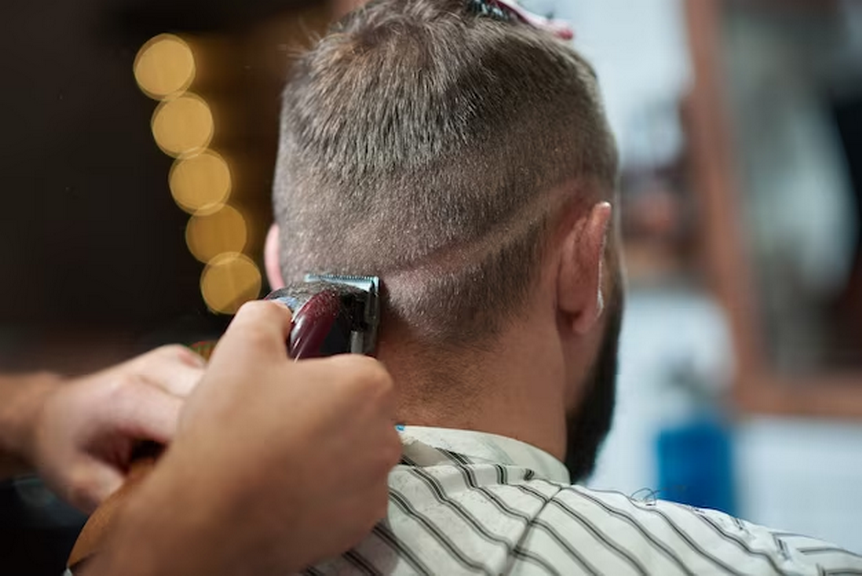
The 1980s and 1990s marked a pivotal moment in the history of the fade haircut. It transitioned from being a symbol of cultural identity to a mainstream fashion trend. This transformation was driven by its adoption in the hip-hop community and the influence of prominent figures.
- The fade haircut transcended cultural boundaries and started appearing in mainstream media, particularly within the world of hip-hop;
- Iconic celebrities like Will Smith, Tupac Shakur, and MC Hammer sported the fade, propelling it to the forefront of popular culture;
- The global fascination with the fade haircut led to debates about its origin, as people from diverse backgrounds embraced and adapted this stylish haircut.
Hip-Hop’s Impact: From the Streets to the Stage
Hip-hop, a genre that originated in African-American and Latinx communities in New York City, played a pivotal role in popularizing the fade haircut. It became an integral part of hip-hop culture, with artists and fans alike embracing the style. Rappers, breakdancers, and DJs sported fades, and it became a symbol of authenticity and street credibility.
Hollywood and Beyond: Celebrity Endorsement
The influence of the fade haircut extended beyond the realm of music. In Hollywood, iconic celebrities like Will Smith, known for his role in “The Fresh Prince of Bel-Air,” and the legendary Tupac Shakur, an influential figure in both music and film, sported the fade. MC Hammer, another superstar of the era, showcased the fade in his music videos and performances. These endorsements catapulted the fade into the mainstream spotlight.
The Global Phenomenon: A Hairstyle for Everyone
As the popularity of hip-hop music and culture spread globally, so did the fade haircut. It transcended cultural and geographical boundaries, becoming a hairstyle embraced by people from diverse backgrounds. This widespread fascination with the fade led to debates about its origin, as individuals from different corners of the world adapted and incorporated this stylish haircut into their lives.
The Fade’s Evolutionary Journey
Let’s delve deeply into its evolution, from its ancient African roots to the diverse range of contemporary variations we see today. Prepare for a detailed educational journey through time and style.
Ancient African Origins
Our journey begins in ancient Africa, where the earliest forms of the fade haircut can be traced. In these civilizations, hairstyles were not mere fashion statements but powerful symbols of identity, status, and age. While the term ‘fade’ had yet to be coined, the foundation of this iconic haircut was laid. Traditional African hairstyles often featured a seamless gradation of hair length, a hallmark of the modern fade.
The Mid-20th Century and Cultural Identity
Fast forward to the mid-20th century, where the fade’s evolution takes a significant turn. It began to gain prominence within Afro-American communities during the 1950s and 1960s. This period saw the fade transform into more than just a hairstyle; it became a potent symbol of cultural identity, pride, and resistance. The fade was intimately associated with the Black Power movement, signifying a return to African roots and a rejection of societal norms.
Mainstream Adoption and the Emergence of Variations
The 1980s and 1990s marked a watershed moment in the history of the fade haircut. It transitioned from a symbol of cultural identity to a mainstream fashion trend. The influence of hip-hop culture, along with the endorsement of iconic figures like Will Smith, Tupac Shakur, and MC Hammer, propelled the fade haircut into the global spotlight.
It was during this period that various fade variations emerged, reflecting the diversity of personal preferences:
| Fade Variation | Description |
| High Fade | A style that starts at the top of the head, creating a sharp contrast between longer hair on top and shorter sides and back. |
| Low Fade | Beginning lower, typically around the ears, the low fade offers a subtler transition between hair lengths. |
| Mid Fade | Striking a balance between high and low fades, the mid fade starts around the temples, providing a harmonious transition. |
| Taper Fade | Known for its softer and more gradual transition between hair lengths, the taper fade offers versatility in styling. |
| Bald Fade | The bald fade takes hair down to skin level at the nape, achieving a clean-shaven, bald appearance in that area. |
These variations highlight the fade haircut’s adaptability, catering to a wide spectrum of tastes and grooming preferences.
Contemporary Icon and Cultural Symbol
In the present day, the fade remains not only a fashion statement but also a cultural symbol. It has firmly established itself in the realms of fashion and grooming, transcending cultural boundaries and being embraced by individuals from diverse backgrounds. The fade’s enduring popularity underscores its timeless appeal, seamlessly blending tradition with modernity.
The Legacy of the Fade Haircut

One cannot deny the fade haircut’s cultural significance and global impact. The eternal curiosity surrounding who invented the fade haircut is a testament to its legacy.
A Symbol of Identity
The fade haircut’s legacy as a symbol of identity spans across time and cultures, reflecting its deep-rooted significance:
- Ancient Tribes and Cultures: The fade’s historical roots can be traced to ancient African civilizations, where hairstyles served as potent markers of identity, status, and tribal affiliation. While the term ‘fade’ did not exist, the essence of this iconic haircut was present in traditional styles characterized by a seamless gradation of hair length. These hairstyles played an integral role in defining the identity of the tribes that embraced them, carrying the spirit of cultural distinction through generations;
- Modern-Day Communities: In the 20th century, particularly within Afro-American communities, the fade haircut emerged as a symbol of cultural pride, empowerment, and resistance. Associated with movements like Black Power, it represented a profound connection to African heritage. The modern interpretation of the fade became a powerful expression of identity, evoking a sense of belonging and unity among those who wore it.
Fashion and Grooming Benchmark
The impact of the fade transcends its historical roots, extending into the realms of fashion and grooming:
- Global Recognition: The fade’s timeless appeal has earned it a place on the international stage. From the haute couture runways of Paris to the vibrant streets of Brooklyn, the fade haircut has become a universally recognized symbol of impeccable grooming and sartorial excellence. Its influence stretches across cultures and continents, uniting people in their appreciation for a well-executed fade;
- Versatility and Enduring Style: The fade’s enduring popularity can be attributed to its remarkable versatility. Its various iterations, including the high fade, low fade, mid fade, taper fade, and bald fade, cater to a wide spectrum of personal tastes and style preferences. This adaptability ensures that the fade remains relevant in the ever-evolving landscape of fashion and grooming trends. Its ability to seamlessly adapt to diverse fashion sensibilities has solidified its status as an enduring style icon.
A Staple in Modern Barbering
Within the modern world of barbering, the fade haircut holds a central and indispensable role:
- Barber’s Repertoire: Mastery of the fade is considered an essential component of a barber’s skill set. Aspiring barbers undergo extensive training to ensure they can expertly execute this iconic haircut. The ability to deliver flawless fades is a hallmark of a professional barber;
- Techniques and Variations: Crafting the perfect fade requires a delicate balance of technical precision and artistic flair. Barbers must possess a deep understanding of the nuances associated with each fade variation. Whether it’s the high fade’s sharp contrast or the taper fade’s subtle transition, mastering these techniques ensures that clients receive personalized grooming experiences that align with their unique preferences.
Conclusion
While the enigma of who invented the fade haircut remains unsolved, its rich history and cultural significance are undeniable. From its roots in ancient Africa to its present-day status as a grooming essential, the fade haircut’s journey is as captivating as its style. Every time you see this iconic haircut, remember its storied past and the mysteries surrounding its origin.
FAQs
Who invented the fade haircut?
The exact individual responsible for the invention of the fade haircut remains unclear. Its origins are traced back to ancient African tribes and were popularized in the 20th century by Afro-American communities.
When did the fade haircut become popular in mainstream culture?
The fade haircut began its rise in mainstream culture during the 1980s and 1990s, especially within the hip-hop community.
Are there different types of fade haircuts?
Absolutely! There are several variations of the fade haircut, including high, low, mid, taper, and bald fades.
Is the fade haircut suitable for all hair types?
The fade haircut is versatile and can be adapted for various hair types, including straight, curly, and coiled hair.
